Trail runners in the snow?
Forum rules
TIP: The online Bushwalk Inventory System can help bushwalkers with a variety of bushwalk planning tasks, including: Manage which items they take bushwalking so that they do not forget anything they might need, plan meals for their walks, and automatically compile food/fuel shopping lists (lists of consumables) required to make and cook the meals for each walk. It is particularly useful for planning for groups who share food or other items, but is also useful for individual walkers.
TIP: The online Bushwalk Inventory System can help bushwalkers with a variety of bushwalk planning tasks, including: Manage which items they take bushwalking so that they do not forget anything they might need, plan meals for their walks, and automatically compile food/fuel shopping lists (lists of consumables) required to make and cook the meals for each walk. It is particularly useful for planning for groups who share food or other items, but is also useful for individual walkers.
16 posts
• Page 1 of 1
Trail runners in the snow?
Ok - I'm booked in to do some hiking in the Grand Canyon in January. I'm hiking down from the South Rim to the river and back. I'm expecting snow for a few miles at the top of the canyon but not all the way down. I have two shoe options, a) non waterproof inov8 roclite trail shoe b) hanwag leather gortex boots. If I take the inov8s I will also take sealskinz "waterproof" socks and a spair pair of woollen socks to change into when I am out of the snow. I will get microspikes to use with whatever footwear I take. I would prefer to take the inov8s as they are lighter and more nimble and I can wear them on the remainder of my trip to the States - the boots will carried just for the hike. It seems it can get seriously cold in the Canyon and I haven't had much experience of hiking in snow, though I imagine it will be well trodden unless I'm the first on the trail. So am I being silly thinking about taking just the shoes or does a couple of hours or so walking on snow ok provided I have a change of socks?
- Watertank
- Athrotaxis cupressoides

- Posts: 260
- Joined: Thu 05 Apr, 2012 1:26 pm
- Region: Victoria
Re: Trail runners in the snow?
If you completely trust your waterproof liners, it might be ok, but obviously not recommended. How certain is it that you'll only see a few hours of snow ?
I walked a day once in the snow behind cradle in trail runners and even with winter thick woolen snow socks, my feet were freezing. Really freezing.
I walked a day once in the snow behind cradle in trail runners and even with winter thick woolen snow socks, my feet were freezing. Really freezing.
-
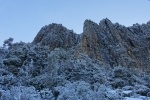
CasualNerd - Athrotaxis cupressoides

- Posts: 488
- Joined: Wed 03 Aug, 2011 3:33 pm
- Region: Tasmania
- Gender: Male
Re: Trail runners in the snow?
VB socks? or bread bags and a couple of spare pairs of socks too
I can't help much as I feel more comfortable myself in heavier footwear, I find LW shoes very tiring to wear
I can't help much as I feel more comfortable myself in heavier footwear, I find LW shoes very tiring to wear
Ve are too soon old und too late schmart
- Moondog55
- Lagarostrobos franklinii

- Posts: 11176
- Joined: Thu 03 Dec, 2009 4:15 pm
- Location: Norlane Geelong Victoria Australia
- Region: Victoria
- Gender: Male
Re: Trail runners in the snow?
Risk of frost bite or worse. Don't underestimate the cold. It's more than just waterproofing.
Just move it!
-
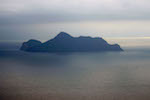
GPSGuided - Lagarostrobos franklinii

- Posts: 6801
- Joined: Mon 13 May, 2013 2:37 pm
- Location: Sydney
- Region: New South Wales
Re: Trail runners in the snow?
Get the socks and gaiters right and trail runners should be fine for sporadic snow. You do lose the stiff sole and toe of boots - which is an advantage in many situations.
The types of boots most of us wear in snow walking in Australia don't have any significant insulation either. And they don't keep your feet dry (maybe for a few hours). With boots or trail runners you are heavily dependant on the sock system to stay warm.
Check out discussions on backpackinglight - plenty using trail runners in snow. I guess the challenge will be knowing the conditions, your limits and what will work for you (sock systems etc). Agree that you should look at vapour barrier socks as an option - I have used my RBH Designs vapour barrier socks in the snow and they were warmer than anything else I have tried. I only find neoprene to be good for lots of immersion in cold water - in slightly drier (occasional water immersion) straight good quality wool socks has been warmer. No immersion in water and colder again I prefer the vapour barriers.
The types of boots most of us wear in snow walking in Australia don't have any significant insulation either. And they don't keep your feet dry (maybe for a few hours). With boots or trail runners you are heavily dependant on the sock system to stay warm.
Check out discussions on backpackinglight - plenty using trail runners in snow. I guess the challenge will be knowing the conditions, your limits and what will work for you (sock systems etc). Agree that you should look at vapour barrier socks as an option - I have used my RBH Designs vapour barrier socks in the snow and they were warmer than anything else I have tried. I only find neoprene to be good for lots of immersion in cold water - in slightly drier (occasional water immersion) straight good quality wool socks has been warmer. No immersion in water and colder again I prefer the vapour barriers.
-
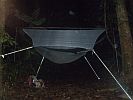
nq111 - Phyllocladus aspleniifolius

- Posts: 932
- Joined: Mon 07 Mar, 2011 8:27 pm
- Region: Queensland
Re: Trail runners in the snow?
Have you ever worn Sealskinz? They are horrid things IMO.
Sent from my SM-N9005 using Tapatalk
Sent from my SM-N9005 using Tapatalk
-
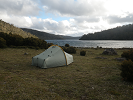
Strider - Lagarostrobos franklinii

- Posts: 5875
- Joined: Mon 07 Nov, 2011 6:55 pm
- Location: Point Cook
- Region: Victoria
- Gender: Male
Re: Trail runners in the snow?
I've hiked a couple of weeks through wet snow in trail runners quite comfortably. I am fortunate that I don't suffer room cold feet and a good pair of wool socks works fine for me. As long as you have a dry pair of warms socks to change into at the end of the day to let your feet dry out, no problems.
-

Turfa - Athrotaxis cupressoides

- Posts: 333
- Joined: Mon 18 Jan, 2010 2:06 pm
- Region: Australia
Re: Trail runners in the snow?
Strider wrote:Have you ever worn Sealskinz? They are horrid things IMO.
Sent from my SM-N9005 using Tapatalk
I have several pairs and have used them for a few years now. Only disappointed once and that was wearing them with trail shoes. I normally wear sandals so I think it was the contact between shoe inner and sock that resulted in damp socks. Not cold just a bit wet. With sandals I could walk through snow and cold water and stay dry and warm !
- gayet
- Phyllocladus aspleniifolius

- Posts: 952
- Joined: Sat 12 Feb, 2011 8:01 pm
- Location: Wallan
- Region: Victoria
- Gender: Female
Re: Trail runners in the snow?
Oh I don't doubt their effectiveness, but they just feel awful!
Sent from my SM-N9005 using Tapatalk
Sent from my SM-N9005 using Tapatalk
-

Strider - Lagarostrobos franklinii

- Posts: 5875
- Joined: Mon 07 Nov, 2011 6:55 pm
- Location: Point Cook
- Region: Victoria
- Gender: Male
Re: Trail runners in the snow?
Thanks for the variety of replies - are vapour barrier socks different to seal skinz ( I've just bought these for this trip so I don't know how they will go..) I will watch the forecast before I leave in case the conditions are really bad. Merry Christmas to all !
- Watertank
- Athrotaxis cupressoides

- Posts: 260
- Joined: Thu 05 Apr, 2012 1:26 pm
- Region: Victoria
Re: Trail runners in the snow?
You'll be fine.
The Grand Canyon is well tracked. You won't be walking in fresh snow, but even if you were, it won't be long before you're out of it. I walked it in early Feb many years ago, there was small patches of snow near the rim and it was cool at the top but no issues. No snow on the trail at all. I wore light footwear.
Enjoy, its a great place to visit!
The Grand Canyon is well tracked. You won't be walking in fresh snow, but even if you were, it won't be long before you're out of it. I walked it in early Feb many years ago, there was small patches of snow near the rim and it was cool at the top but no issues. No snow on the trail at all. I wore light footwear.
Enjoy, its a great place to visit!
Michael
-

photohiker - Lagarostrobos franklinii

- Posts: 3097
- Joined: Sun 17 May, 2009 12:31 pm
- Location: Adelaide, dreaming up where to go next.
Re: Trail runners in the snow?
Have you read the National Park Service web page?
And
Appropriate Footwear - waterproof boots, gaiters to keep snow and mud out of your boots.
And
The following narrative is meant as an introduction ONLY to winter trail conditions on the South Rim (west to east). Further research, including talking with the Backcountry Information Center, is highly recommended prior to your first winter hike in the canyon.
The South Bass Trail can be difficult to access in winter due to the necessity to travel on 30 miles of remote roads. During wet years snow is the main hindrance with mud being the biggest concern in late winter and early spring. The primary access road is FR 328 which is administered by the U.S. Forest Service. The Boucher Trail as it parallels the west side of Hermit Canyon is known for developing a serious stretch of ice after big storms and during the spring melt. This is due to the trail's west-facing exposure which allows for significant daytime heating. When this daytime thaw combines with the cold nighttime temperatures of the upper canyon you have a perfect recipe for trail-ice. The Hermit Trail has less snow and ice than any other trail on the South Rim. This is due in part to the trailhead being at less than 7000ft. In addition, at about 0.5 miles the trail turns from north-facing to southwest-facing as it descends through the Coconino Sandstone. So expect some snow and ice at first, but with quickly improving conditions as you descend. The Bright Angel Trail is a fault line trail that is primarily north-facing. Packed snow and ice tends to be consistently encountered for the initial three miles. The South Kaibab Trail is a ridgeline trail that receives considerable daytime heating. The initial 1/4 mile, known as the Chimney, is north-facing and holds ice all winter long. Below the Chimney, ice is intermittent. The Grandview Trail is north-facing and at a higher elevation and thus receives considerable snow at the trailhead. This trail, more than any other, tends to turn around unprepared hikers due to the combination of narrow sections of trail, exposure, and ice. The New Hance Trail and the South Bass Trail are the least used South Rim trails in the winter. First time winter hikers often report route finding problems on the New Hance Trail. The Backcountry Information Center recommends hikers consider not ending a backpack trip on this trail in winter, especially when a big storm is forecasted. The Tanner Trail has a long and prolonged north-facing section. The upper two miles tend to remain snow covered throughout the winter.
-

RonK - Phyllocladus aspleniifolius

- Posts: 845
- Joined: Mon 31 Dec, 2012 10:33 am
- Region: Queensland
- Gender: Male
Re: Trail runners in the snow?
Here is 24/12 webcam photo:

http://www.nature.nps.gov/air/WebCams/p ... ca_arc.cfm
There surely is snow at the top, but as you can see conditions warm up as you descend into the canyon.
Recent conditions at the south rim show sub zero conditions overnight with above freezing conditions during the day.
http://www.nature.nps.gov/air/WebCams/p ... rcacam.cfm
When we hiked it, we had to drive the rental car onto a snow filled carpark area. We left late heading down the Kaibab trail and were clear of snow within half an hour. A warm parka would be of more benefit in my opinion than heavy boots and gaiters, but do whatever you prefer, and enjoy the trip. Its a great place to visit.

http://www.nature.nps.gov/air/WebCams/p ... ca_arc.cfm
There surely is snow at the top, but as you can see conditions warm up as you descend into the canyon.
Recent conditions at the south rim show sub zero conditions overnight with above freezing conditions during the day.
http://www.nature.nps.gov/air/WebCams/p ... rcacam.cfm
When we hiked it, we had to drive the rental car onto a snow filled carpark area. We left late heading down the Kaibab trail and were clear of snow within half an hour. A warm parka would be of more benefit in my opinion than heavy boots and gaiters, but do whatever you prefer, and enjoy the trip. Its a great place to visit.
Michael
-

photohiker - Lagarostrobos franklinii

- Posts: 3097
- Joined: Sun 17 May, 2009 12:31 pm
- Location: Adelaide, dreaming up where to go next.
Re: Trail runners in the snow?
Thanks Ron K, yes I had read the Parks info, I am planning to go down the south Kaibab trail, 1/4 mile estimated of ice and up the Bright Angel trail, 3 miles of snow at the top section. So I was thinking given that I won't be walking all day with snow and ice and I will be staying overnight at the bottom of the canyon in a lodge that I will be able to get warm after walking through the snow and will be able to change into dry socks if necessary as soon as I'm out of the snow. I know it is always hard to predict, but I often over plan and over carry for my hikes, I'm thinking given the relatively short period of snow walking that even if my feet get wet and cold I should be ok. But it is always good to get the opinions of others on this helpful website. At the moment it seems that opinion is divided. I definitely will be taking a down jacket and a raincoat.
- Watertank
- Athrotaxis cupressoides

- Posts: 260
- Joined: Thu 05 Apr, 2012 1:26 pm
- Region: Victoria
Re: Trail runners in the snow?
I'm up and out of the Grand Canyon. Fabulous experience. After carefully reading all the helpful posts and then the weather forecast I decided to take my light weight boots rather than my trail runners. Although I would have preferred to just take my trail runners the prospect of minus 12 degrees deterred me! Actually I took both my runners and my boots. But I wore my boots. For an Aussie the conditions were very cold. 3 or 4 inches of snow one night on the south rim. I did walk around in my runners but their breatheability which in Australia is an asset was way too cold for me. There was a couple of hours of snow walking on the hike down into the canyon and I wore microspikes on my boots, I was thankful for these. Of course other hikers more experienced in snow may have done without them. Oh I didn't go down the South Kaibab trail, the road was closed to the trail head, I manages to arrive just as a winter storm blew in, and Parks advised against that route. So it was Bright Angel both ways. I've uploaded a photo of the trail.
- Watertank
- Athrotaxis cupressoides

- Posts: 260
- Joined: Thu 05 Apr, 2012 1:26 pm
- Region: Victoria
Re: Trail runners in the snow?
Looks amazing Watertank!
"If you wish to make an apple pie from scratch, you must first invent the universe"
-
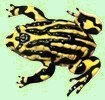
GBW - Athrotaxis selaginoides

- Posts: 1175
- Joined: Fri 02 May, 2014 9:03 am
- Location: Melbourne
- Region: Victoria
- Gender: Male
16 posts
• Page 1 of 1
Who is online
Users browsing this forum: No registered users and 42 guests
